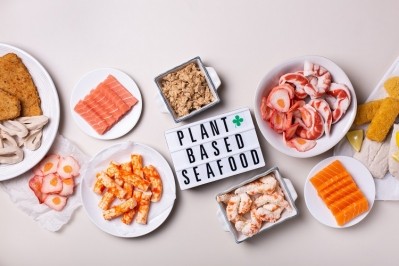F&B opportunity: Boosting protein intake earlier for elderly

Older consumers must increase their protein intake sooner than they currently believe is necessary – from the age of 55 – a cross-party of European researchers working with Norwegian food research institute Nofima has stated.
“As you get older, there are several factors that make you eat less. For example, you feel fuller faster,” said senior Nofima scientist, Øydis Ueland.
“We have seen what people over the age of 70 eat, and what it takes to increase the content of protein and vitamin D in their diet.”
The study worked on the principle that consumers could be helped to increase protein levels through their own cooking. However, other industry experts advocate food and drink manufacturers increase the number of protein-enriched products on supermarket shelves.
Older consumers who cook for themselves prefer flavourless protein powders that could be added to both cold and hot, as well as sweet and savoury, dishes without altering the taste. Two neutral – one milk- and one soy-based – were tested, according to the study.
Protein-packed dishes for older consumers
Test participants were asked to cook dishes including oatmeal, granola, French toast, pancakes, mashed potatoes, muffins, carrot soup and pasta bolognese, and use flavourless protein within each dish.
Bridget Benelam, a spokesperson for the British Nutrition Foundation, which did not partake in the research, said: “As we age we start to lose muscle mass and strength as part of a process known as ‘age-related sarcopenia’.
“In the long term this can have a real impact on health and quality of life, making it more difficult to live independently and increasing the risk of falls and fractures.”
The study found most people were sceptical about using protein powders to enrich their food, and did not feel comfortable adding an unfamiliar powder to something they were going to consume. “Many people like to take supplements in tablet form, but having the supplement in the food itself, that’s something else,” said Ueland.
Benelam added: “There are many high protein products on our shelves – both those that are naturally high in protein and those with protein added.
“Messaging directed at older adults, highlighting the importance of protein for healthy ageing could help raise awareness of this issue.”
A protein opportunity for food and beverage manufacturers
The opportunity for food and drink manufacturers, to make increased protein intake easier for middle-aged and elderly people is there, says The Organic Protein Company founder Daniel Whitehead.
“Middle-aged and elderly people aren’t normally looking for a complete diet overhaul; they want to enjoy their favourite foods, not gulp down bitter gritty protein shakes,” he said.
“It's crucial companies focus on making protein powders and protein-fortified foods that blend seamlessly into everyday meals. No weird aftertaste or bitty texture. Just the same delicious meals they've always loved, with an almost invisible protein boost.”
Whitehead acknowledged it can also be difficult for anyone to consume products packed with protein during the day. And drinking a protein shake twice daily was preferable for many.
He advocated whey protein as a water-soluble, “cleaner-tasting” additive that often has a more neutral taste profile too. Vegan protein powders like pea, rice and hemp do not dissolve in water, tending to be “bulkier” as a result, despite some new generation variants on the market addressing this and other consumer qualms.
“Whether fortifying existing food products or taking the more straightforward protein powder route, [manufacturers should] make it as easy as possible for people to get the protein they need without challenging their daily routine, nor indeed their taste buds. It's all about making healthy aging a breeze, without sacrificing time or the enjoyment of food,” says Whitehead.
Sourced From: Food Quality and Preference
Published on: September 2024
Doi: https://doi.org/10.1016/j.foodqual.2024.105205
Authors: Geny, Alexia; Brasse, Céline; Rognså, Guro Helgesdotter; Filin, Ludovic; Nouri, Lilia; Feyen, Valérie; Szleper, Emilie; Ueland, Øydis; Smith, Rachel; Methven, Lisa; Maître, Isabelle; Van Wymelbeke-Delannoy, Virginie; Sulmont-Rossé, Claire

























